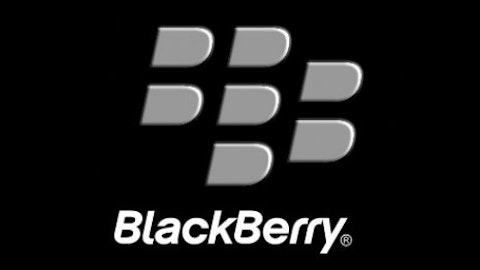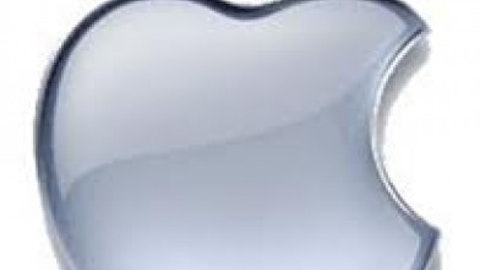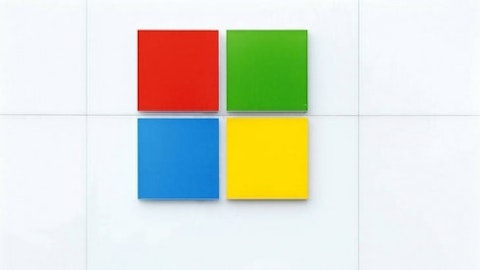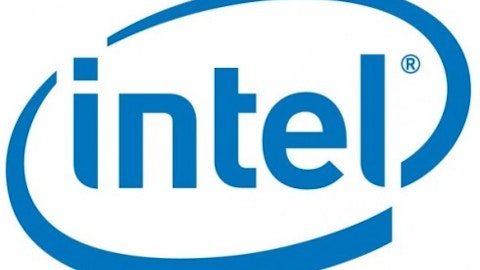Mr. Market left big-box electronics retailer Best Buy Co., Inc. (NYSE:BBY) for dead in late 2012. Even in the darkest days of the Great Recession, Best Buy stock bottomed out around $20, but last December, the stock fell to a low of $11.20 — less than 5 times adjusted earnings.
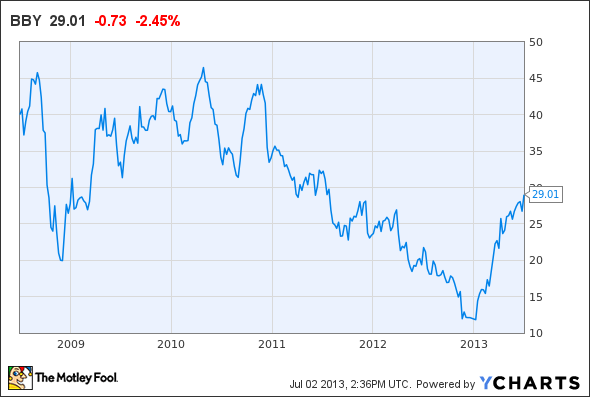
Best Buy Stock 5 Year Price Chart, data by YCharts
The initial market reaction to the company’s “Renew Blue” turnaround plan — announced late last year — was lukewarm. Many investors felt that the company could not fend off competition from Amazon.com, Inc. (NASDAQ:AMZN) in the long run. However, in the past six months, the stock has enjoyed a renaissance as investors have started to buy into CEO Hubert Joly’s vision.

Earnings still on the decline
Last quarter, Best Buy Co., Inc. (NYSE:BBY) reported a 1.3% decline in comparable store sales. That performance was weighed down by a calendar shift that moved the pre-Super Bowl TV sales rush to Q4, as well as fewer major product launches. For example, the first Retina-screen iPad launched in March 2012, but there were no Apple Inc. (NASDAQ:AAPL) product launches in the same period this year. On the other hand, Best Buy’s new price-matching policy probably helped sales.
Nevertheless, the net effect was a significant decline in profitability. Adjusted EPS plummeted from $0.76 to $0.32, as Best Buy Co., Inc. (NYSE:BBY)’s operating margin dropped from 3.9% to 2%. The operating margin decrease was caused primarily by a decline in domestic gross margin 25.3% to 23.4%. Best Buy’s attempts to compete on price with Amazon.com, Inc. (NASDAQ:AMZN) and other electronics retailers constituted the biggest drag on gross margin.
Best Buy’s Q1 performance was symptomatic of the general problems it faces. It can certainly boost sales by becoming more competitive on price, but in doing so it will have to accept lower gross margins. With competitors such as Amazon.com, Inc. (NASDAQ:AMZN) and Costco content to survive on razor-thin margins, it seems naive to expect Best Buy to return to the “glory days” of 2007 and earlier, when the company’s annual operating margin eclipsed 5%. With margins tightening, future profit growth will be modest at best.
Yet expectations rise
In spite of the clear challenges facing Best Buy Co., Inc. (NYSE:BBY), numerous analysts have recently fallen in love with Best Buy stock, and many investors have followed. In early April, Best Buy stock climbed more than 16% after the company announced a deal to add small “Samsung Experience Shops” in more than 1,400 Best Buy stores nationwide. A similar deal with Microsoft Corporation (NASDAQ:MSFT) to open 500 small Windows shops in Best Buy stores followed last month .

The Samsung Experience Shop at Best Buy. Photo: Best Buy.
